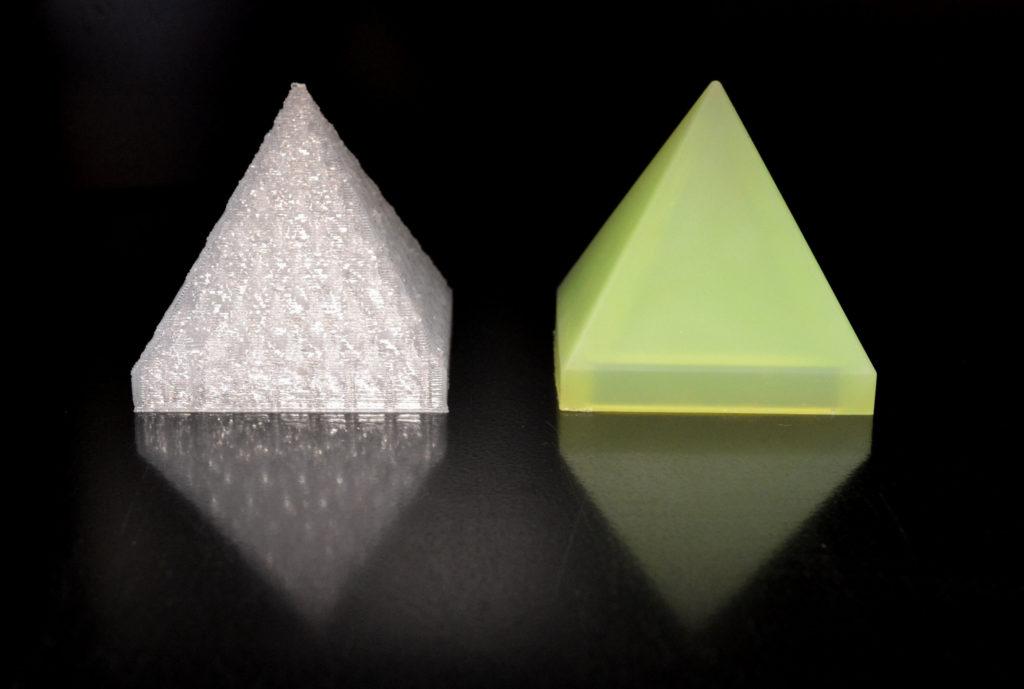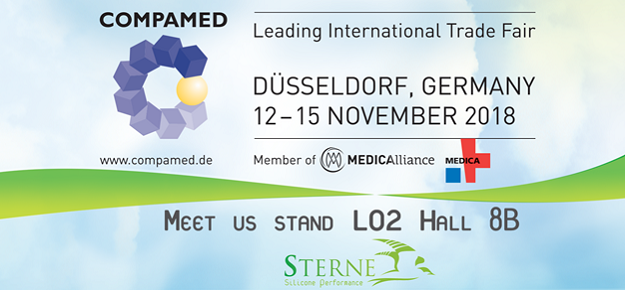Sterne Elastomere, a company located in the south of France, specializes in manufacturing items out of silicone materials for industries such as food and drink, mass transit, medical, nuclear, and pharmaceuticals and cosmetics. Two years ago, Sterne made its move into the 3D printing world and debuted its SiO-Shaping 1601 silicone 3D printer at K 2016, a top plastics and rubber trade show, for the first time.
In order to provide its clients with 3D printed silicone prototypes that possessed properties similar to that of the final product, Sterne developed its technology so it could deposit filaments of 100% UV-cured silicone. It’s definitely not easy to 3D print with silicone, due to properties that make it unable to be heated and extruded in the same way that typical thermoplastic materials can be, but companies like Sterne, Wacker Chemie, and Fripp Design Research have been making great strides over the last few years.
 Over the last two years, Sterne, which has over 20 years of experience in the silicone industry, has been working hard to refine its 3D printing silicone technology, so it can be a viable alternative option for customers looking to meet their technical needs. Now the company is bringing its SiO-shaping 3D silicone printing method to COMPAMED 2018, a trade fair for medical suppliers and manufacturers which begins in a little over a week in Düsseldorf, Germany.
Over the last two years, Sterne, which has over 20 years of experience in the silicone industry, has been working hard to refine its 3D printing silicone technology, so it can be a viable alternative option for customers looking to meet their technical needs. Now the company is bringing its SiO-shaping 3D silicone printing method to COMPAMED 2018, a trade fair for medical suppliers and manufacturers which begins in a little over a week in Düsseldorf, Germany.
According to a release by the company, “Sterne is able to manufacture little to medium series on projects dedicated to 3D printing. An approved solution for pieces with a need situated between molding and extrusion technics, on specific applications both medical and short term implantable. Now, it is only in one step that devices with complex and atypical forms can be produced. A research and development department composed of 3D specialists and engineers, go with clients on project development and monitoring, perpetuating new concepts and ideas. A quick manufacturing on competitive deadlines since no design or validation of tools is necessary.”
The company’s SiO 3D silicone printing has been further refined since it was first introduced. In 2016, it promised a minimum 3D print layer height of 0.25 mm, but can now achieve a minimum of 0.1 mm (100 microns). Its SiO-Shaping 1601 silicone 3D printer offers a maximum print volume of 205 x 200 x 100 mm, along with hardness from 30 to 60 Shores A.
 Sterne’s silicone 3D printing can help all of its customers with their fast prototyping needs. But its specialty is manufacturing thin, accurate silicone products for the medical sector that meet the necessary aesthetic and technical needs.
Sterne’s silicone 3D printing can help all of its customers with their fast prototyping needs. But its specialty is manufacturing thin, accurate silicone products for the medical sector that meet the necessary aesthetic and technical needs.
“Whether High Consistency Silicone Rubber (HCR) or Liquid Silicone Rubber (LSR), Sterne masters a large range of manufacturing process such as extrusion, molding, making, over-molding inside ISO 6, ISO 7 and ISO 8 cleanrooms,” the company’s release states.
In addition, Sterne’s SiO silicone 3D printing also offers a full panel of colors, including phosphorescent, translucent, and opaque, which is available for colors like red, yellow, black, and green. However, these colors are only available for materials that meet the necessary quality requirements according to the FDA or USP class VI medical grade.
You can see the company’s silicone 3D printing prowess for yourself at COMPAMED from November 12-15 in the Düsseldorf exhibition center. To rediscover, or see for the first time, Sterne’s range of products for the medical sector, visit the company at Stand L02 in Hall 08b.
Discuss this story and other 3D printing topics at 3DPrintBoard.com or share your thoughts in the Facebook comments below.


